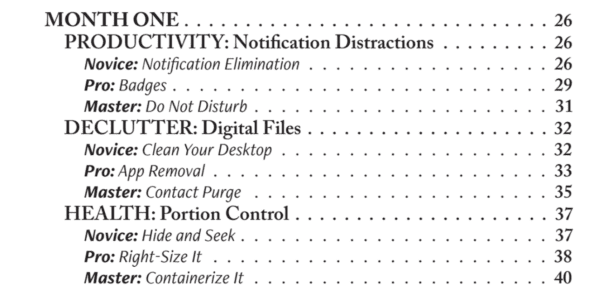“Thanks so much for the invite! I won't be able to make it because I'm taking the weekend to regroup after a hectic week. It looks like it'll be a great event. Have an amazing time!”
It’s just two letters, and yet saying no can feel hard — even complicated. For many of us, saying no doesn’t just feel awkward. It feels wrong.
A 2016 research review examining people’s influence over others found, “Many people agree to things — even things they would prefer not to do — simply to avoid the considerable discomfort of saying ‘no.’”
So, whenever anyone asks you to do anything, you might blurt out, “Yes!, Sure!, Of course! and Happy to”, but in reality, you may feel the opposite. Maybe you’d rather be doing about a thousand other things.
“The difference between successful people and really successful people is that really successful people say no to almost everything.” – Warren Buffet
Saying ‘No’ every time can be tedious and time-consuming work. Using the following 3 simple techniques in your day-to-day life can prove useful.
- Create an email template that rejects your invitation. Because you have written it beforehand, it takes the emotion out and may not make you feel so bad. We use apps such as Streak** and ClickUp** to manage our email templates easily.
- Think about what your guardrails are for your meetings. My guardrail is that I always talk to someone first over the phone before I meet them for coffee so that we don't waste each other's time. I also discuss this in my YouTube video on Why You Need a Phone Meeting Before You Meet Face to Face.
- Have a meeting budget. Determine how many hours a week you can spend in meetings. Twenty hours? Anything over 20 means something has to be removed. If you have less than 20 hours, you can add on a mentoring session or any other important meeting. The idea is to think of your time like a budget.
Sometimes, we say yes because we don’t know what we want. Other times, we need to gather the courage to speak up. Saying no is a skill you can sharpen. The more you say no, the more natural it will feel. It’s well summarised by a quote from Steve Jobs ‘It’s only by saying NO that you can concentrate on things that are really important.’
Here are other things to keep in mind to become an expert at saying no the right way:
Value Your Time
Know your commitments and how valuable your precious time is. Then, when someone asks you to dedicate some of your time to a new commitment, you'll know you can't do it. You can use apps such as Acuity Scheduling** to mark appointments online and efficiently prioritize how many hours people can schedule with you a week.
Outsource
Consider if you can say yes to that project and outsource part of it. I like these platforms – iworker, virtual latinos and entigrity**.
Practice Before Saying No
Practice makes perfect. Saying “no” more often is a great way to get better and more comfortable saying the word. Sometimes, repeating the word is the only way to get a message to highly persistent people. When they keep insisting, continue to say no in a kind way. Eventually, they'll get the message.
Don’t Apologize
A common way to start is “I'm sorry, but…” as people think it sounds more polite. While politeness is important when you learn to say no, apologizing makes it sound weaker. You need to be firm and unapologetic about guarding your time. When you say no, realize you have nothing to feel bad about. You have every right to ensure you have time for the things that are important to you.
Set guardrails
Again, it’s important to be polite, but being nice by saying “yes” all the time only hurts you. When you make it easy for people to grab your time, they will continue to do it. However, if you set boundaries, they will look for easier targets. Show them your time is well guarded by being firm and turning down as many requests (not on your top priority list) as possible.
Take Time To Say “No”
Instead of providing an answer then and there, it’s often better to tell the person you’ll give their request some thought and get back to them. This will allow you to consider it, check your commitments and priorities, and be proactive rather than reactive. Do this only if it’s a consideration. Don't leave them hanging if you don’t want to do it. Just say no!
Offer An Alternative Timeframe
Suppose this is an option that you'd like to keep open instead of just shutting the door on the request. It's often better to say, “This sounds like an interesting opportunity, but I don't have the time. Perhaps you could check back with me in [give a time frame].” Next time they check back with you, you might have some free time to give them.
Be Sincere About Your Rejection
Don't be insincere about your rejection of someone's request. The person or project is often good, but it's unsuitable for you or at the right time. You can complement the idea, the project, the person, and the organization but say it's not the right fit or what you're looking for now. Be sincere in rejecting a request, as people can sense insincerity.
The bottom line is that saying no isn't easy, but once you master it, you'll find that you're less stressed and more focused on the things that matter to you.
“When you say yes to something you don’t want to do, here is the result: you hate what you are doing, you resent the person who asked you, and you hurt yourself.” James Altucher, The Power of No
When it comes from a place of resentment, can saying yes when you genuinely mean no ever be a good thing?
Post co-written by Marcey Rader and Rijul Arora.
Note: ** are affiliate links, meaning that we'll earn a commission if you choose to purchase. This commission comes at no additional cost to you. We use these ourselves and recommend them regardless, but if we can earn a small commission, why not?


